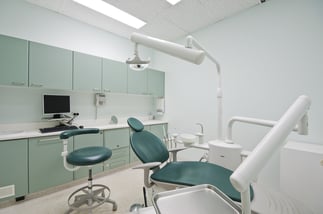Safe Water in a healthcare environment is something that we all expect and assume is the case, however, some conditions and circumstances may affect the quality of the “wholesome” (as defined by The Water Supply (Water Quality) Regulations 2016) water that has been delivered to the premises by the water undertaker, which can cause deterioration of quality by the time it reaches the end user.
Bacteria in water
A wide range of bacteria are naturally occurring in our water supply, and they can thrive in this aquatic environment. Once the water leaves the water treatment plant and goes on its journey to the end user, a small number of these bacteria may be present, hitching a ride!
The diameter of a town mains between the treatment plant and the consumer tends to be large so the temperature is likely to be well below 20 degrees C, which is the maximum recommended water temperature for a cold-water supply which helps inhibit the growth or further proliferation of bacteria that may be present.
 Water systems in hospitals are inherently large and complex systems and may have additional speciality systems such as renal, SSD, or dental departments which require a specialized maintenance regime, as well as what we consider to be the “domestic” hot and cold-water systems.
Water systems in hospitals are inherently large and complex systems and may have additional speciality systems such as renal, SSD, or dental departments which require a specialized maintenance regime, as well as what we consider to be the “domestic” hot and cold-water systems.
Once the water supply enters a building, the environment in which it travels changes dramatically. The residual disinfectant added by the water undertaker will degrade and with smaller diameter pipework, biofilm can become established. Once established, biofilm can release a huge number of bacteria and water-borne pathogens.
HTM04-01 and other Guidance – your responsibility
Once water enters a building, the water quality becomes your responsibility. The underpinning guidance for healthcare environments is HTM04-01 2016; Part B – Safe Water in Healthcare Premises; Operational Management.
This document explains how correct governance is key to directing, managing, and monitoring your activities to ensure they are aligned with current guidance and legislation, and to ensure compliance whilst ensuring that the safety of your patients, staff, and visitors are not compromised.
To achieve water safety and compliance, you must have effective risk management strategies, safe processes and working practices, and above all, sufficient resources supported by suitably qualified and competent staff.
Key elements to your overall strategy should include:
- An up-to-date Legionella Risk assessment in line with BS8580-1 2019
- An up-to-date Risk Assessment for Pseudomonas aeruginosa and other water-borne pathogens in line with BS8580-2 2022
- A robust Water Safety Plan in line with BS8680-2020
- An up-to-date sampling plan in line with Sampling for Legionella bacteria in water systems – code of practice BS7592-2022
- A Water Safety Group (WSG) that meets regularly and is well attended by the correct people.
BS8680-2020 Section 4.2.8.1 states.
In large buildings or where there are complex systems, specialist uses of water, and/or a more susceptible population, there should be a multidisciplinary team, referred to here as the water safety group (WSG) (see 3.32).
To ensure effective ownership and provide assurance on the effective management of water safety and associated risk management, the organizational structure, lines of accountability, and communication up to top-level management by the WSG should be clear and facilitate the regular reporting and review of the status of water risk management and the supporting infrastructure.
The WSG remit, allocation of responsibilities, and reporting structure should be agreed with the duty holder, who should be given support to conduct their role effectively, for example, resources, suitably qualified, trained, and competent staff, and supporting documented procedures and policies.
The Water Safety Group, adhering to their terms of reference and standing addressing each agenda item at each meeting is the overarching “gatekeeper” when it comes to the checks and balances required to achieve compliance in line with current guidance and legislation.
Other Considerations
An area often overlooked or ignored is the need for a robust risk management strategy for new buildings or refurbishments of existing premises.
A Project Design Review Protocol/Policy is a valuable tool to be used when considering proposed works, be it new builds or refurbishment. The aim is to “Get it right first time” to not inadvertently introduce unnecessary risk which can be very time-consuming and costly to put right retrospectively.
Private initiatives (Private Hospitals) also have an equal duty of care to patients, staff, and visitors as outlined in HTM guidance. (PFI are effectively a private enterprise)
Conclusion
The daily footfall in a hospital can be substantial, as well as the numbers of staff and patients, some of whom may be more vulnerable to the potential effect of acquiring an infection because of poor water quality within the building.
Acquiring such an infection or condition from a water system within a hospital is avoidable. The guidance and help available are comprehensive and readily accessible. A pragmatic and structured risk-managed approach will help you to make HAI (hospital-acquired infections) a never event in your hospital.
Feel free to reach out if you have any questions about the issues mentioned above or if you would like to consult with one of our experts on water hygiene.
Editors Note: The information provided in this blog is correct at the date of original publication - February 2024.









